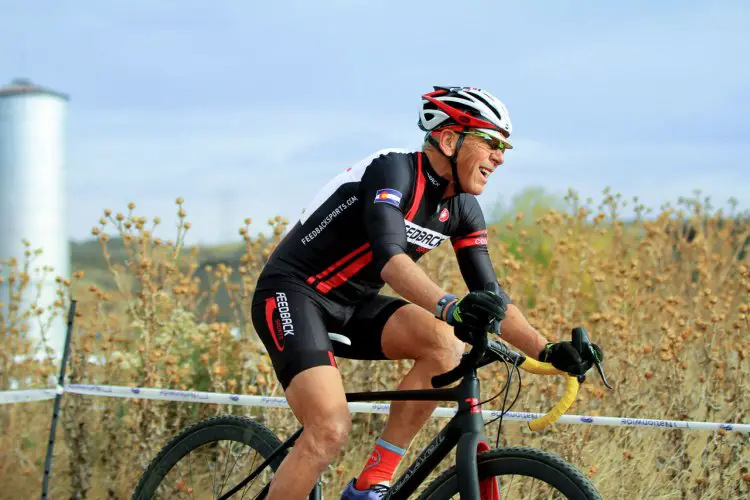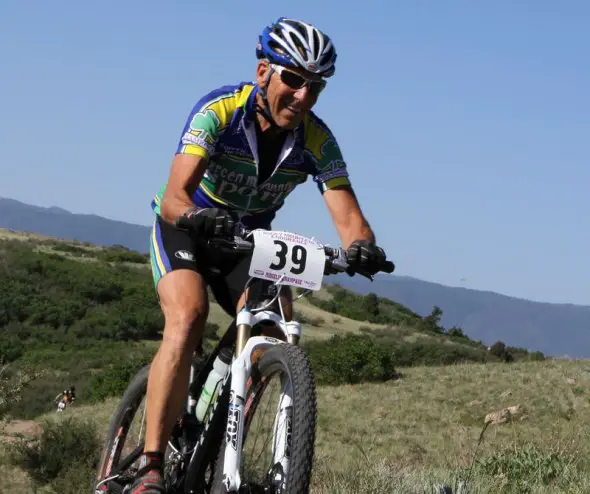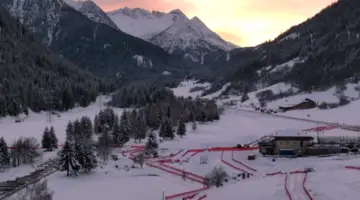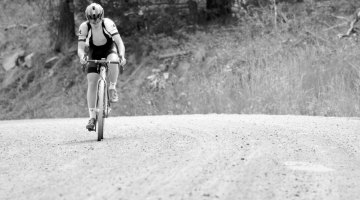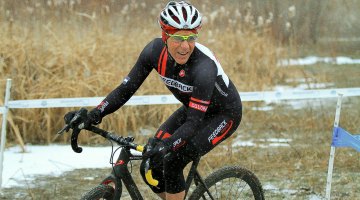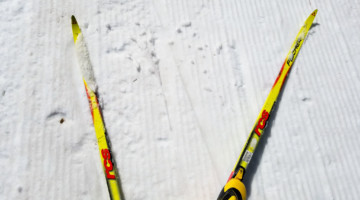Colorado-based Masters racer Lee Waldman is a legend of the pages of Cyclocross Magazine. He has been providing insight and personal experiences from racing cyclocross and life’s adventures since 2009. As the Mountain Bike World Championships go down Down Under, Waldman is back with a timely column about the cyclocross benefits of short track and endurance mountain bike racing. Waldman is gearing up for a trip to Cyclocross Masters Worlds in Mol, Belgium, so prepare to enjoy the journey with him this cyclocross season.
I haven’t written anything in a while because I haven’t really had anything to say. Now, the summer mountain bike season is winding down for me, the mid-week ’cross series has started here in Colorado and there are some big things on the horizon for this season. My training in 2017 has been focused around a trip to Mol, Belgium, for Cyclocross Masters Worlds. I’m not even thinking about a podium position, but I’m not willing to just show up without having done my due diligence in preparing to race in the heartland of cyclocross.
A couple of years ago, I wrote a piece about short track mountain bike racing and how it helped me effectively prepare for cyclocross. Although I had a couple of “interesting” short track experiences this summer—one positive and two not so positive—I still think short track and endurance mountain biking can be the perfect elixir for preparing for the challenges of riding skinny tires in the dirt. Even though the tires are wide, the position on the bike different and the geometry of the bike is not similar, the act of riding an undulating, constantly-changing surface is key to my comfort on a ’cross course. Using suspension, whether front or full, definitely alters the ride dynamics a bit, but for me, the result is still the same: sharper handling skills.
This summer I have been able to get some good short track efforts in and challenge myself to a completely different type of mountain bike race at the Leadville stage race. Having emerged from both a stronger and more confident rider, I think there is a benefit to riding both short track and endurance courses, especially in the area of cyclocross bike handling confidence.
Short Track Training for Cyclocross
Short track is and will remain an important element of my “offseason” training. The similarities to cyclocross make it a perfect complement to the longer endurance races I’ve learned to love. Short track provides a great opportunity to fine tune line choices since most races have laps shorter than six minutes. In a 30-minute race, I get the opportunity to see the same section five-plus times and continually work on dialing in the lines. For someone like me who is always trying to fine tune my cornering, the fast laps of a short track race give me that opportunity.
There’s also a challenging element from ’cross that is present in short track racing: the continually changing course condition. I’ve seen short track courses change from hard pack to loose over hard, to simply loose in a matter of a couple of laps. Knowing that I have to be prepared to change my line and alter my technique at a moment’s notice has also prepared me for similar situations on the ’cross bike. How many times have you found yourself in traffic in a ’cross race just looking for a clean line? Short track is yet another perfect opportunity to hone those bike handling skills that will make the hectic start to any ’cross race seem easier.
Finally, short track racing provides the opportunity to go into the red and stay there. I don’t find that in endurance racing nor do I find it on the road because of the opportunity to sit in the wheels. In short track, as in ’cross, you’re out there on your own.
Getting the Leadville Out for Fitness
And then there’s endurance racing which, as I’ve mentioned, has become another integral part of my summer. The intensity of mountain bike racing prepares me for the pain and suffering of ’cross—I tell myself, if I can suffer through a 3 to 4 hour effort on the mountain bike, 40 minutes of ’cross will be a walk in the park. The thing I’ve discovered this summer that ultimately caused me to revise my approach to summer preparation, is the joy, and yes, the effectiveness of longer mountain bike events, mountain bike stage racing in particular.
I’ve always suspected that I have the kind of body that gets stronger with consecutive days of racing. As it turns out my body seems to be built for multi-day racing. My last race of the summer was the three-day Leadville mountain bike stage race. In three days, we rode the entire Leadville 100 course. Honestly, I came away with an even higher level of respect for riders who do it in a day. I can’t imagine it, considering how trashed I was after each stage.
In a way, I think it might be just as hard, if not harder to do the course in stage race format. First of all, since the stages are “shorter” (not easier, just shorter), you tend to push harder knowing that it will end soon. Second, the cumulative effect of that kind of effort builds over the course of three days. For me, somehow, I managed to get stronger and fitter each day despite the beating my body took on the infamous Leadville course. I actually had my best ride of the three on the last stage, and my recovery ride after the last day of racing felt awesome. I am confident this anecdata supports my theory.
Mountain Bike Your Way to Handling Confidence
But there’s more! Think for a minute about the technical challenges inherent in most mountain bike races, whether they’re held over one or several days. The climbs and ensuing descents are steeper, rockier and more challenging than those on the typical cyclocross course. Whether you ride those downhills white knuckling the bars, eyes barely open and praying to survive as I did in Leadville, or just point and shoot with clear vision, you’re improving by the meter.
After climbing slash hike-a-biking Powerline, I find that every climb I do now pales in comparison. I now have the confidence to try riding sections I would never have considered a few weeks ago, and I have found that attitude spilling over on to my ’cross riding. I’m much more comfortable pushing into dicey corners and pointing the bike down sketchy descents than in the past. I may not be fitter now—I will find out soon enough at the first cyclocross races of the season—but I’m so much more confident. And we all know that state of mind makes a world of difference when we line up to turn the pedals in anger.
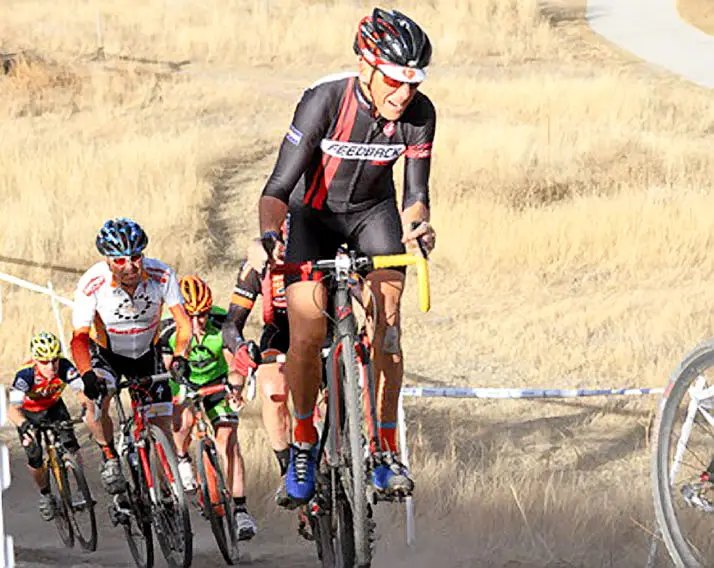
Lee is already feeling more confident in his handling skills on tough sections for the upcoming season. photo: courtesy
My advice, should you choose to take it, is to add some longer mountain bike races to your summer race schedule. It’s probably too late for this year, but next year, grab your hardtail or dual squish and head to a local mountain bike race.
I am happy with the gains in confidence and ability I have gotten from my short track and stage race mountain bike adventures, and I think I am that much further along in my preparation for Masters Worlds in Mol thanks to the lung-busting, white-knuckling rides at Leadville. I am looking forward to this opportunity to keep readers updated on my progress on the road to Mol and maybe help provide some insight on what does and does not work for improving at cyclocross.
As for now, please go ride your bike.













